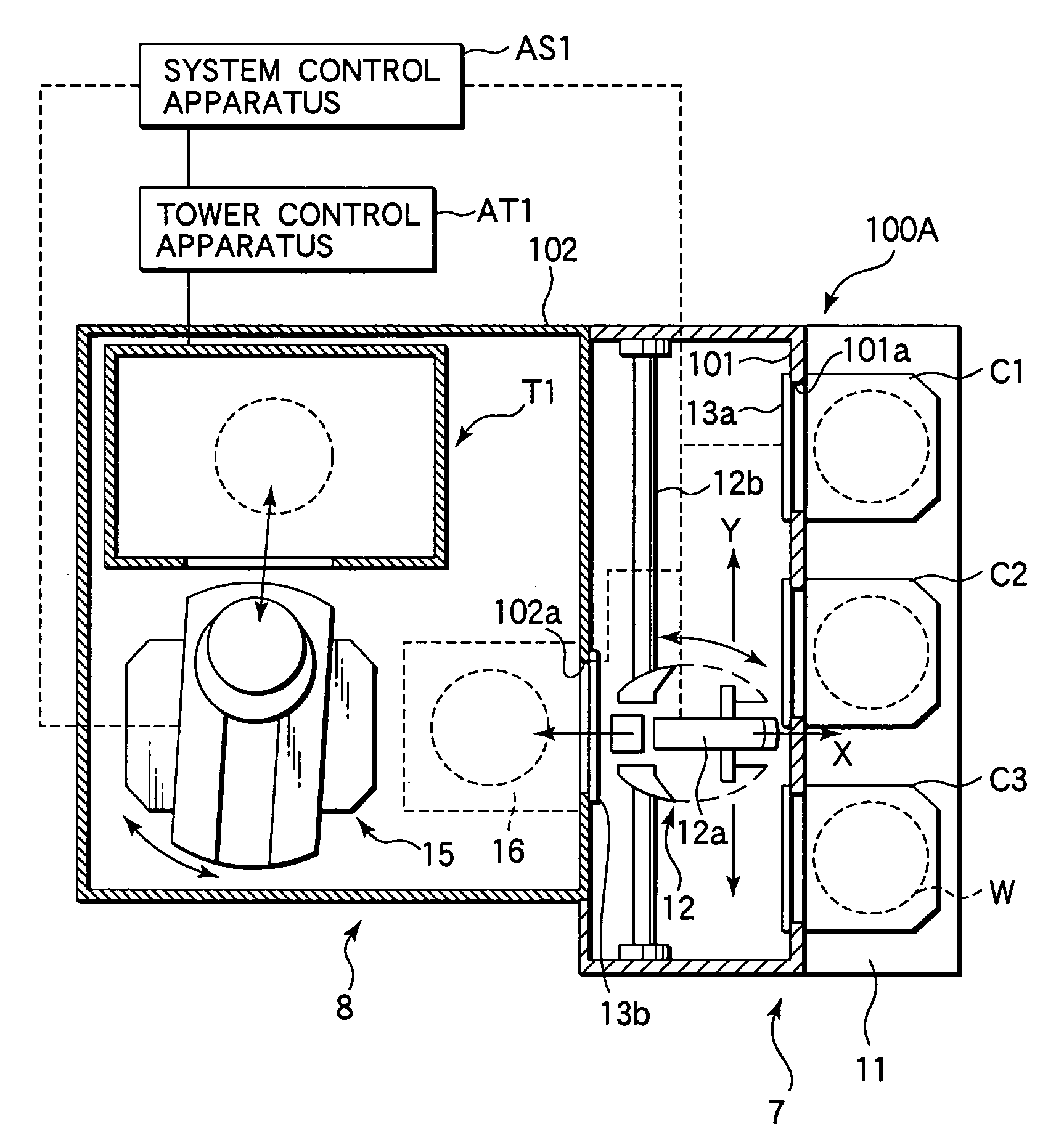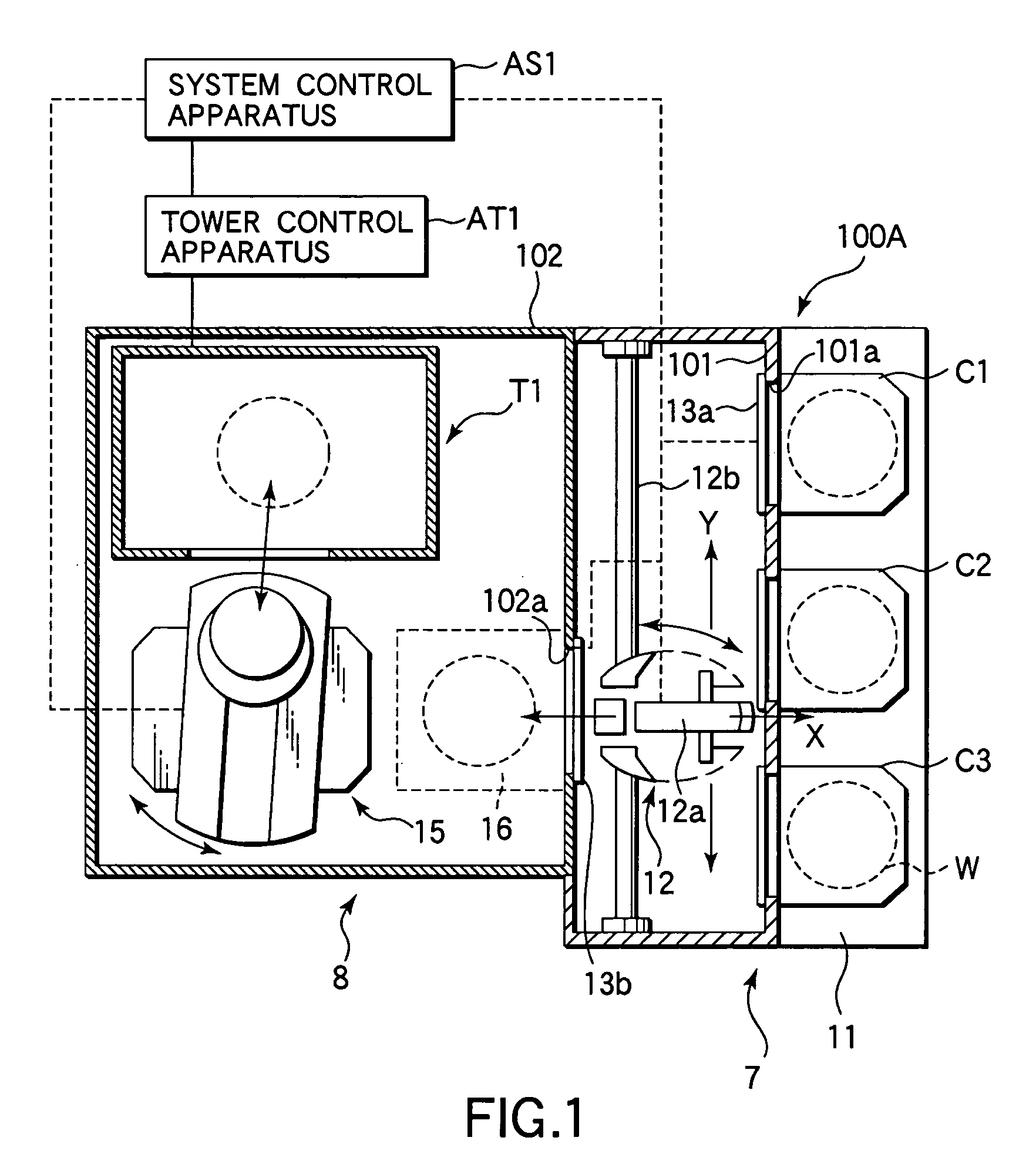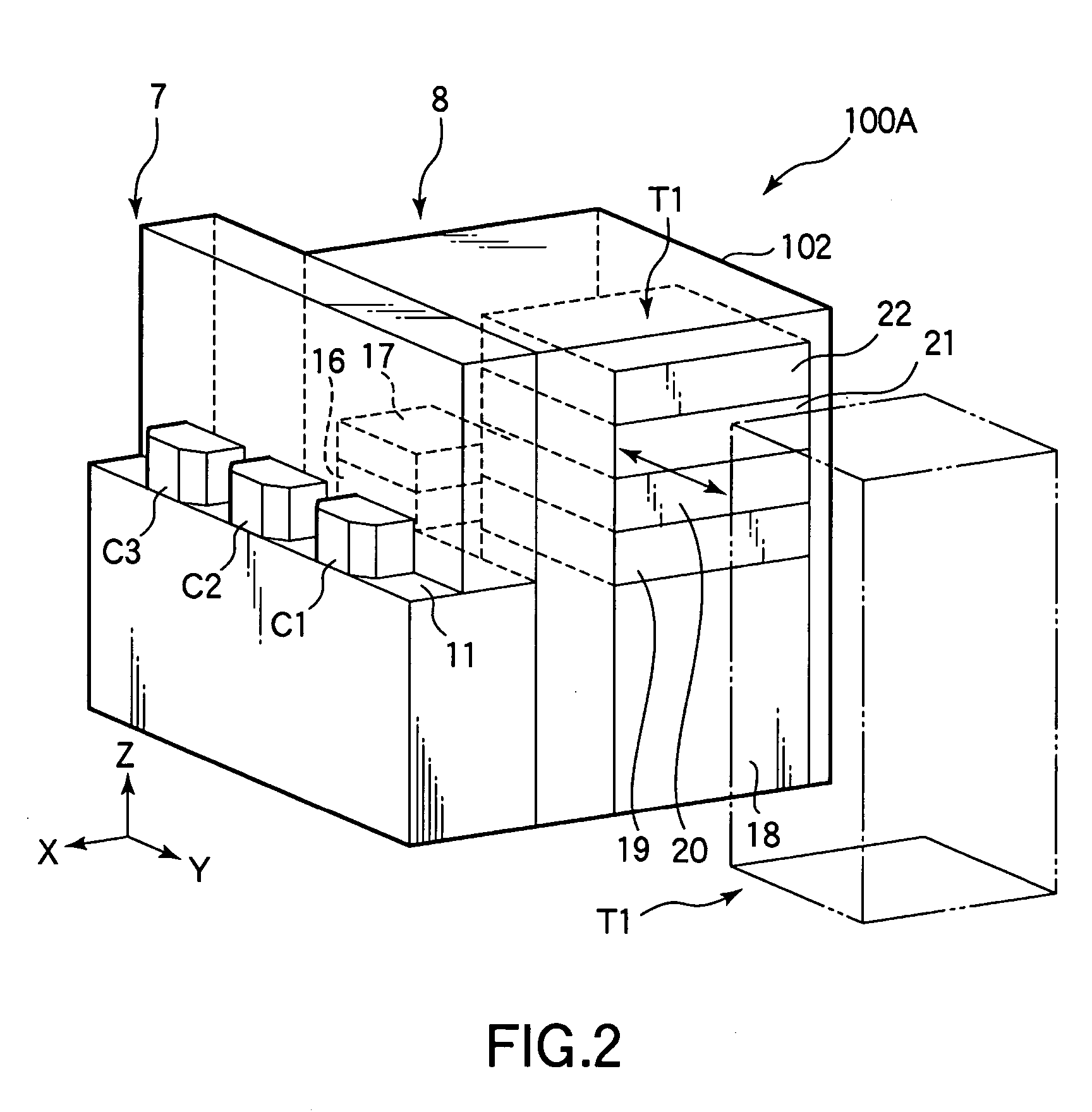Insulation film formation device
a technology of film formation device and film, which is applied in the direction of liquid surface applicators, electrostatic spraying apparatus, coatings, etc., can solve the problems of increasing the footprint of the entire sod system, generating difficulty in the sod system, and poor transfer efficiency of wafers within the sod system. , to achieve the effect of suppressing waste, reducing footprint, and improving substrate transfer efficiency
- Summary
- Abstract
- Description
- Claims
- Application Information
AI Technical Summary
Benefits of technology
Problems solved by technology
Method used
Image
Examples
Embodiment Construction
[0068] An embodiment of the present invention will now be described with reference to the accompanying drawings.
[0069]FIG. 1 is a horizontal cross sectional view schematically showing the construction of an SOD system 100A for forming an insulating film by an SOD method, and FIGS. 2 and 3 are an oblique view and a side view, respectively, each showing the construction of the SOD system 100A shown in FIG. 1.
[0070] The SOD system 100A comprises a process block 8 for applying a prescribed processing to a wafer W and a carrier block 7 for transferring the wafer W between a carrier C housing a prescribed number of wafers W and the process block 8.
[0071] The carrier block 7 includes a carrier table 11 on which a plurality of carriers, e.g., three carriers C1 to C3, can be disposed and a sub-transfer mechanism 12 for transferring the wafer W between the carriers C1 to C3 disposed on the carrier table 11 and the process block 8. The sub-transfer mechanism 12 is arranged within a housing ...
PUM
 Login to View More
Login to View More Abstract
Description
Claims
Application Information
 Login to View More
Login to View More - R&D
- Intellectual Property
- Life Sciences
- Materials
- Tech Scout
- Unparalleled Data Quality
- Higher Quality Content
- 60% Fewer Hallucinations
Browse by: Latest US Patents, China's latest patents, Technical Efficacy Thesaurus, Application Domain, Technology Topic, Popular Technical Reports.
© 2025 PatSnap. All rights reserved.Legal|Privacy policy|Modern Slavery Act Transparency Statement|Sitemap|About US| Contact US: help@patsnap.com



